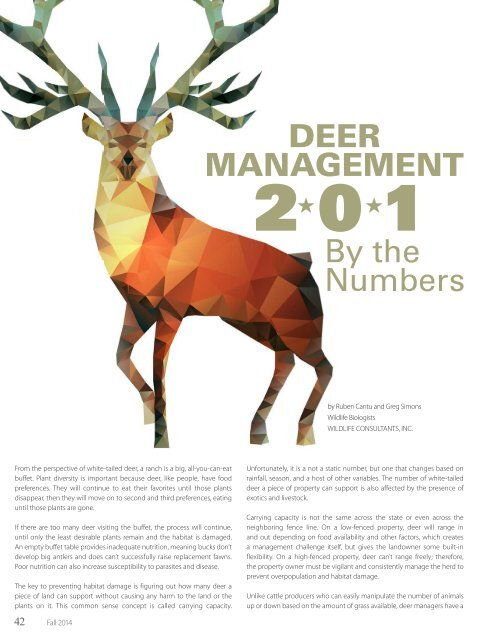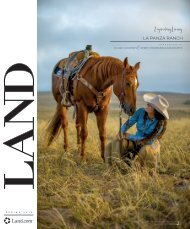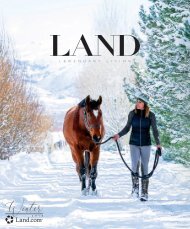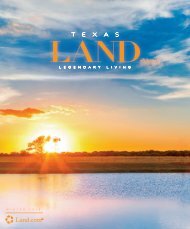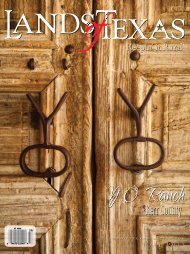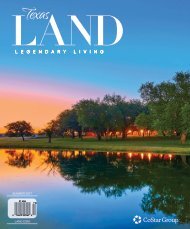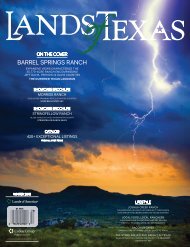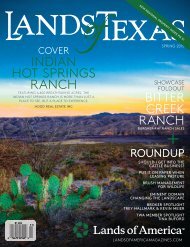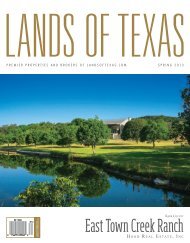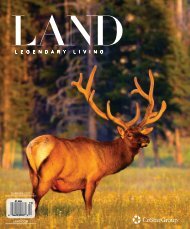You also want an ePaper? Increase the reach of your titles
YUMPU automatically turns print PDFs into web optimized ePapers that Google loves.
y Ruben Cantu and Greg Simons<br />
Wildlife Biologists<br />
WILDLIFE CONSULTANTS, INC.<br />
From the perspective of white-tailed deer, a ranch is a big, all-you-can-eat<br />
buffet. Plant diversity is important because deer, like people, have food<br />
preferences. They will continue to eat their favorites until those plants<br />
disappear, then they will move on to second and third preferences, eating<br />
until those plants are gone.<br />
If there are too many deer visiting the buffet, the process will continue,<br />
until only the least desirable plants remain and the habitat is damaged.<br />
An empty buffet table provides inadequate nutrition, meaning bucks don’t<br />
develop big antlers and does can’t successfully raise replacement fawns.<br />
Poor nutrition can also increase susceptibility to parasites and disease.<br />
The key to preventing habitat damage is figuring out how many deer a<br />
piece of land can support without causing any harm to the land or the<br />
plants on it. This common sense concept is called carrying capacity.<br />
42<br />
<strong>Fall</strong> <strong>2014</strong><br />
Unfortunately, it is a not a static number, but one that changes based on<br />
rainfall, season, and a host of other variables. The number of white-tailed<br />
deer a piece of property can support is also affected by the presence of<br />
exotics and livestock.<br />
Carrying capacity is not the same across the state or even across the<br />
neighboring fence line. On a low-fenced property, deer will range in<br />
and out depending on food availability and other factors, which creates<br />
a management challenge itself, but gives the landowner some built-in<br />
flexibility. On a high-fenced property, deer can’t range freely; therefore,<br />
the property owner must be vigilant and consistently manage the herd to<br />
prevent overpopulation and habitat damage.<br />
Unlike cattle producers who can easily manipulate the number of animals<br />
up or down based on the amount of grass available, deer managers have a


